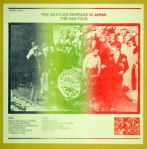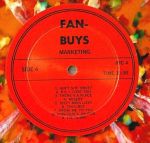Source: June 29, 1972, Paris Theatre BBC Studios in London
This is the track list according to the BBC Transcription Reels:
1 Ice Cream Cakes
2 Morning Dew
3 Goin’ Down
4 Definitely Maybe
5 News Ways/Train Train
6 Ain’t No Sunshine
7 Got The Feeling
8 Let Me Love You
Some notes on the BBC Transcription Reel (posted at musictravellers.blogspot):
“After Rod Stewart left the Jeff Beck Group in 1971, Beck had intended to form a power trio with Vanilla Fudge members Carmine Appice (drums) and Tim Bogert (bass), but those plans were derailed when he suffered a serious car crash in 1970. By the time he recuperated in 71, Bogart and Appice were playing in Cactus, so the guitarist had formed a new version of the Jeff Beck Group.
Featuring keyboardist Max Middleton, drummer Cozy Powell, bassist Clive Chaman, and vocalist Bobby Tench, the new band recorded Rough And Ready (1971) and Jeff Beck Group (1972). Neither album attracted much attention. A far superior artifact of this lineup is the group’s European Tour in 1972. Taken from a Radio 1 “In Concert” these reels boast the band in devastating form. Of all the Jeff Beck bands, this lineup was always the most musically satisfying. They possessed a depth and quality that remains unparalleled by Beck’s subsequent project bands. From the weeping duo guitars of Beck and Tench on the ballad Definitely Maybe to the absolutely definitive soul classic rendition of “Ain’t No Sunshine”, the band preen and strut like possessed demons. Beck’s walking on water!
Cactus dissolved in late 1972, and Beck, Bogert and Appice formed a power trio the following year. The group’s lone studio album was widely panned due to its plodding arrangements and weak vocals, and the group disbanded the following year.”
Re-release on K&S


















